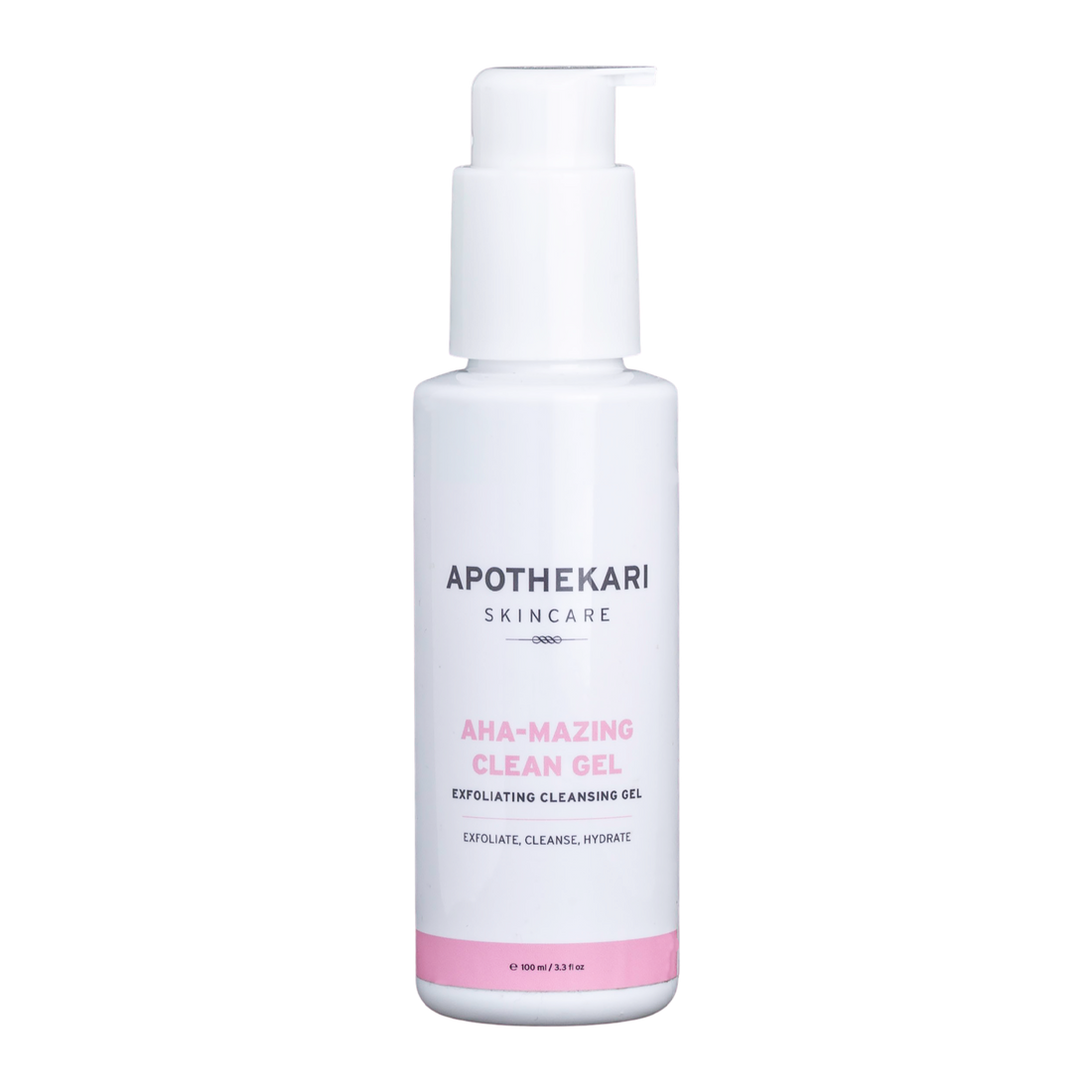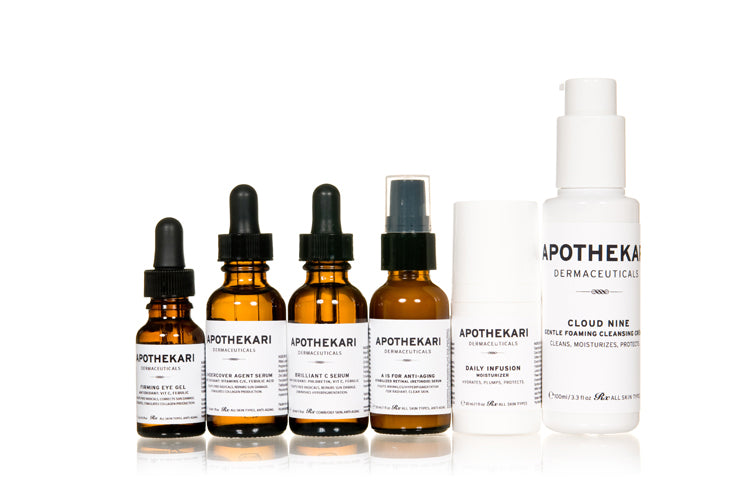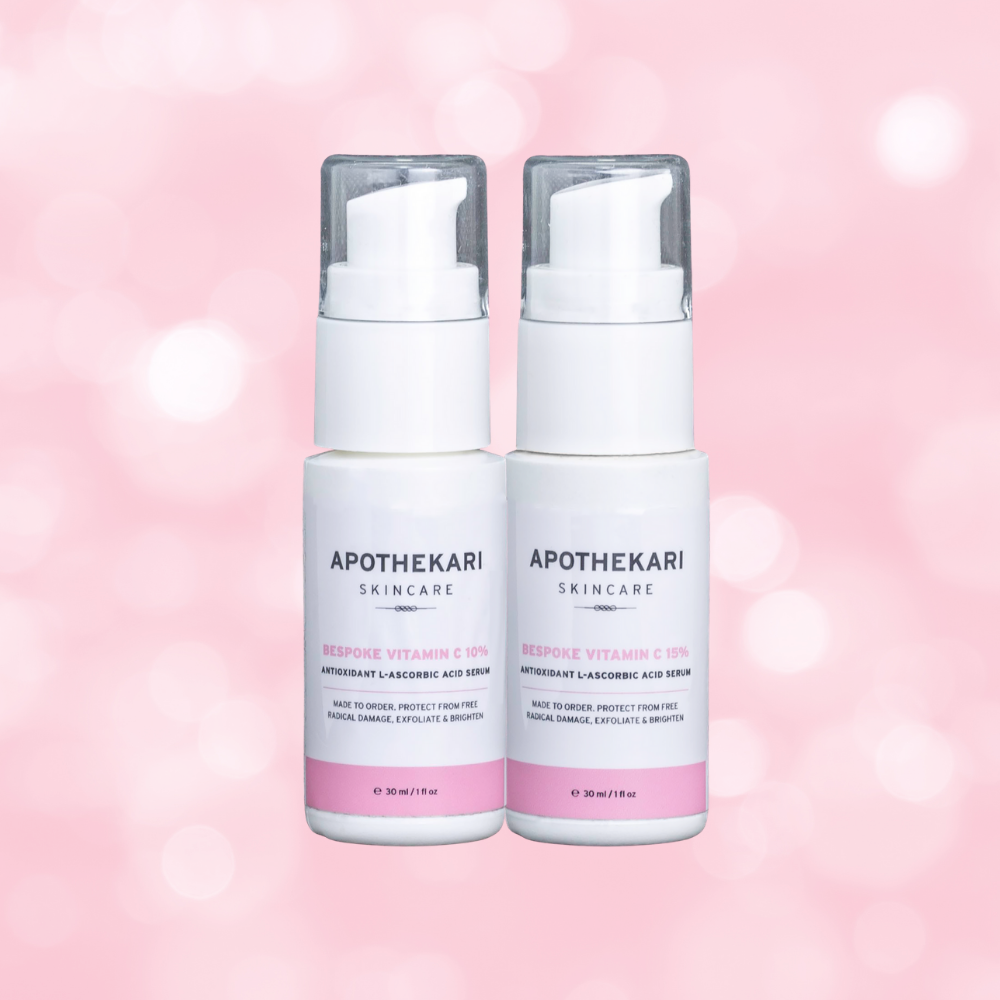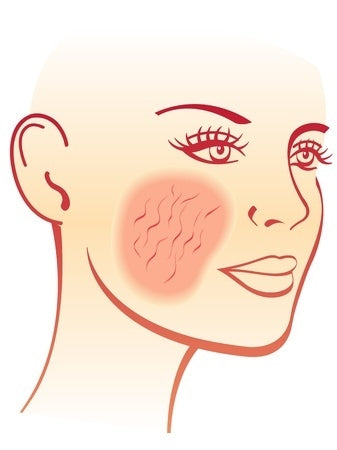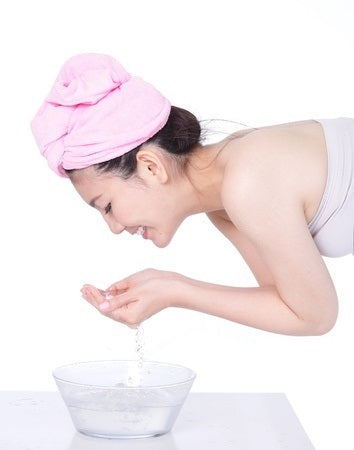Blog
5 Winter Sunscreen Tips
In this post I’ll share my top 5 winter sunscreen tips to help you keep your skin protected from the sun’s ultraviolet (UV) rays, which can damage skin year round, in both summer and winter. Shop Bespoke Vitamin C 15% Do I Need to Apply Sunscreen in Winter? The deep of January may seem an odd time to deliver winter sunscreen tips. However, you need to apply sunscreen regardless of the time of year. Two types of the sun’s UV rays can damage skin: UVA Rays. These deep penetrating rays are prevalent year round. They pass through glass and clouds and are associated with Aging and some types of skin cancers. UVB Rays. These shorter penetrating rays are the ones mainly associated with Burning. Like UVA rays, they may contribute to some types of skin cancer as well. While I’m all for sitting inside drinking warm cups of tea and reading books or bingeing on Netflix through the cooler months, being a shut-in probably isn’t wise. Someone has to buy groceries after all. And, fresh air is good for the soul! If I’m working, I’m usually close to the window so my skin is receiving daily UV exposure, even in the dead of winter. Which Sunscreen is Best for Winter? Here’s how to choose a sunscreen in the winter (or summer)—here are my 5 top winter sunscreen tips: Aim for a Minimum of SPF 30. An SPF 30 sunscreen blocks about 97% of UVB rays when applied correctly. Most health professionals will recommending SPF 30 as the minimum when it comes to sunscreen. Go for Broad Spectrum. Though most sunscreens should offer you protection against both UVA and UVB rays, some don’t. Look for those labelled as ‘broad spectrum’, which means that they will protect against both types of rays. Apply Enough. Studies have shown that most of us never apply enough sunscreen, meaning that we aren’t getting the protection indicated on the label. How much is enough? For the most part, you’ll need about ¼ teaspoon for your face (not including your neck, ears or head). I like to apply once, wait a bit and then apply again. This helps to make sure I cover any missed areas the second time around. If your decollete will be exposed, don’t forget that area. And try to get the tops of your hands too. Apply First Thing in the Morning. Doing this achieves two things. First, it helps to get you into the habit of wearing sunscreen every day, year round. Second, it ensures that you are protected even it you stay indoors. Remember that you don’t have to go outside for exposure to UV rays as UVA rays can penetrate through windows. Find a Sunscreen You Like. Experiment a bit. Find a sunscreen whose texture, fragrance and skin feel you like. If you’re happy with your sunscreen, you’ll be more likely to use it. Lastly, if you want to up the ante on protecting your skin against UV damage, consider adding in an antioxidant. Antioxidants protect skin differently than sunscreen can, by helping to minimize skin damage caused by exposure to free radicals. Free radicals are unstable molecules, which are generated by UV rays, pollution and other external factors. We like our Bespoke Vitamin C Serum, which boasts L-ascorbic acid, green tea extract and an arsenal of antioxidants to deliver the ultimate in skin protection. What’s your take? Any further winter sunscreen tips to offer?
Learn more5 Scary Skin Care Habits
In honour of Halloween, today’s post outlines 5 scary skin care habits. These are things we should minimize or avoid as much as possible to ensure the health and wellness of our skin. Shop Cloud Nine Foaming Cleansing Creme 1. Smoking You already know it’s bad for your health; it’s also bad for your skin. Smoking breaks down elastic fibers in the skin (which is why smokers’ complexions look yellow) and amps up the enzyme responsible for breaking down collagen (and that definitely leads to wrinkles), leaving smokers with yellowed, more wrinkled skin. The good news? Quitting will result in improvements – skin texture improves and over time, it becomes brighter too. It’s never too late to quit! 2. Over Cleansing While it’s still important to remove your make-up at night, don’t always reach for the exfoliating, stripping cleanser. Creamy or oil-based cleansers are more gentle and it is a good idea to alternate them with more exfoliating ones. Try Apothekari Cloud Nine Foaming Cleansing Creme. 3. Eating Poorly “You are what you eat”. It’s not just a saying, it really is true. Consuming too much sugar, alcohol or junk food shows on your face. Alcohol is dehydrating and can lead to skin that is dull and blotchy. Try to limit the amount of alcohol you consume by sipping water between drinks. Foods high in sugar or simple carbohydrates, like dessert and potato chips rapidly convert into glucose, which can raise your insulin levels. This leads to inflammation, which ultimately contributes to sagging skin and wrinkles. Digested sugar can also lead to glycation, a process where sugar is converted to advanced glycation end products – AGEs which attach to proteins like collagen causing them to harden. AGEs can also contribute to the development of age spots, dullness, and tumours. 4. Neglecting the Sunscreen You already know that a well formulated sunscreen is one of your best bets against aging skin. Slathering SPF over your entire face even in the winter is a great start, but don’t ignore the rest of your body, including the tops of your hands and exposed décolleté. 5. Skipping Exercise Exercise not only lifts your mood, but the increased blood flow and stress reduction that comes with regular exercise, also shows on your face. Exercise helps to minimize a rise in cortisol, the stress hormone. Once you lessen the spikes of this hormone, your skin will say thank you by way of fewer breakouts and an increased smoothness. Halloween may come every year, but let this year be the one that you banish these scary skin care habits for good and say hello to boo-tiful skin!
Learn moreExfoliating Skin: 7 Ways To Do It Right
When it comes to exfoliating skin, there are some dos and don’ts. Exfoliating helps to remove dead skin cells from the outer layer of our skin (the stratum corneum) to reveal the soft and hydrated skin hiding underneath (the epidermis). Skin undergoes a natural exfoliating process every day, but this process slows as we age, and can leave skin looking dull, dry, flaky and lackluster. Exfoliation benefits most individuals by helping to speed up the shedding but it’s important to do it correctly. When exfoliating skin, you should consider your skin type to ensure that you are using the right method and the correct ingredients. You can choose between the two main methods for exfoliation – physical and chemical. Physical exfoliation employs the use of a tool, such as a brush, a sponge or a scrub or polish to physically remove dead skin cells. Chemical exfoliation relies on chemicals including alpha hydroxy acids (AHAs), beta hydroxy acids (BHAs) or fruit enzymes like papain (from papaya) and bromelain (from pineapple). Shop A Is for Anti-Aging Serum (Our Retinoid Formulation) Shop Aha-Mazing Clean Gel Cleanser Shop Apothekari Bamboo Lemongrass Foaming Body Polish How Exfoliants Work AHAs and BHAs work by gently dissolving dead skin cells to ‘unglue’ the bonds that hold dead skin cells on the surface. Fruit enzymes are gentler and work by breaking down the keratin in skin. They may be more suitable for sensitive skin. By breaking down bonds, skin naturally sheds so that the newer, healthier skin cells are visible. Chemical exfoliants also: Hydrate Even Out Skin Tone and Improve the Look of Dull Skin Smooth out Rough Texture Make Skin Look and Feel Firmer Diminish the Look of Wrinkles and Fine Lines While AHAs and BHAs have much in common, there are differences. AHAs are water soluble and act on the skin’s surface. They are an ideal choice for normal to dry skin types and can help to reduce the visible signs of sun damage. BHAs are oil soluble and work on both the skin’s surface and inside pores to help clear them out. They are ideal for normal to oily skin and can be helpful to individuals prone to developing milia. You can combine AHAs with BHAs if you feel that your skin will benefit from it. However, it may be wise to space out their use – alternating days, for example – as the combination may be too irritating if used at the same time. Combination skin may do well with BHAs on the oily areas and AHAs on the drier areas. Exfoliating skin delivers many benefits, but keep these tips in mind: Consider your Current Skin Care Regimen. If you are already using retinoids, benzoyl peroxide or other low pH treatments, exfoliating treatments may irritate skin. Try to space out if possible. Consider alternating retinoids with exfoliants. Don’t worry too much about cleansers because they are mainly washed off. However, proceed carefully with sensitive skin. Chemical Exfoliants May be too Much if you Have Sensitive Skin. Do a patch test first. It is possible that light physical exfoliation with a washcloth may be all you need. If you Have Darker Skin go Slowly. Aggressive exfoliation may irritate skin leading to hyperpigmentation. Be Gentle. Whether using a physical or chemical exfoliator, apply with gentle pressure using small, circular motions. Avoid exfoliating if skin is broken or sunburned. Moisturize. Exfoliating skin is effective, but it can be drying. Apply a hydrating and emollient moisturizer after. Choose the Right Physical Exfoliant. Stay away from large exfoliants like fruit pits or nut shells, which have rough, jagged edges and can cause micro tears in your skin. Opt instead for spherical and gentle treatments like sugar polishes or jojoba beads. Smaller particles in this case, are better. Don’t Overdo It. The frequency with which you exfoliate depends on your skin type and exfoliation method. Be careful not to over-exfoliate, as this can lead to skin that is red and irritated. Do you exfoliate? Please share your tips.
Learn moreHow Long for Skin Care Results?
When it comes to expecting skin care results, how long should you realistically expect to start noticing a difference? In most cases, you shouldn’t expect instant results. It took years for sun damage and wrinkles to appear so it’s unrealistic to expect them to disappear overnight. Shop All Apothekari There are products that can have more immediate impact, but for the most part, it can take weeks to months to notice a real difference. Skin cell turnover – the process by which old skin cells shed and new ones rise to the surface – takes about three to four weeks when you are a teenager, but can increase to between 6 weeks to three months once you are in your 50s. The slowing of this process as we age results in a greater accumulation of dead cells on the skin’s surface. Skin may appear dry, flaky and saggy. Lines, wrinkles and discolouration can become more prevalent. Here’s a rundown of what to expect for skin care results from different products: Alpha Hydroxy Acids (AHAs). AHAs exfoliate the top layer of dead skin cells revealing the newer, healthier ones hiding below. You’ll notice a more radiant complexion right away and a gradual improvement in skin tone over the course of several weeks. Try AHA-Mazing Clean Cleansing Gel. Moisturizers. Depending on the ingredients in your moisturizer, you can start to see results upon application. Emollients like squalane, for example, enhances the skin’s natural barrier function and boosts its ability to retain moisture. An improvement in the skin’s condition will become apparent with continued use. Try Daily Infusion Moisturizer. Salicylic Acid. Used to help unclog pores, this ingredient is a boon to those of us with acne blemishes. There will be some immediate results, but it can take about 3 months of regular use to benefit from its full effects. Vitamin C. This potent antioxidant can interfere with the production of the melanin pigment, helping to fade dark spots. You may start to notice skin appearing brighter within three weeks but it can take 2 months or longer for hyperpigmented spots to start fading. Find it in our Bespoke Vitamin C Serum. Retinoids. This collagen booster can help to reverse sun damage, minimize the appearance of fine lines and wrinkles, and improve skin tone. It can take between 2 to 3 months to start seeing some improvement, and improvement continues over time. Consider A is for Anti-Aging. Serums and Target Treatments. Depending on the formulation, skin can begin to look and feel younger over a short period of time. Skin tone can improve after about 2-4 weeks but ongoing use is required for continued improvement. A few treatments can deliver faster skin care results but for the most part, it takes time for a product to really make a difference. Consistent and continued use is necessary to achieve and maintain results. While topical treatments are effective at reversing some of the signs of aging skin and preventing further damage, they will not be able to make you look 20 years younger so you must stay realistic. If this is your expectation, then a cosmetic medical procedure or surgery may be better suited to your needs.
Learn moreWhy Your Skin Needs an Antioxidant Serum
Want to know why most skin care professionals recommend incorporating an antioxidant serum into your daily skin care regimen? This post explains exactly that. Shop Bespoke Vitamin C 15% Shop Bespoke Vitamin C 10% Simply put, an antioxidant is a molecule that inhibits the oxidation of other molecules. Oxidation is a chemical reaction that can produce free radicals, harmful substances that we hear a lot about when it comes to skin. You may have also heard free radicals described as Reactive Oxygen Species – ROS, which is a term used to describe them in living organisms. Free radicals hasten the aging process by contributing to chain reactions that ultimately may damage cells. Because they react with whatever is around, they can attack DNA, proteins and lipids, permanently changing their structure. When it comes to skin, the end result is damage, which we see as fine lines, wrinkles, hyperpigmentation and some types of skin cancer. Because free radicals also trigger inflammation, they have been associated with a breakdown of collagen, which leads to skin sag. Unlike free radicals, antioxidants are stable molecules. They help by donating one of their electrons to a free radical, thereby stopping the chain reaction that causes damage. Fortunately, our bodies manufacture a number of important antioxidants to help combat free radical damage. This includes glutathione and enzymes such as catalase and superoxide dismutase. The recommendation to eat (or in the case of your skin, to apply) antioxidants such as vitamin C, vitamin E and others is to help top up your body’s antioxidant store if too many free radicals are present. There is a lot of research to support the topical application of antioxidants, which have been shown to help protect skin from damage caused by UV rays, pollution and smoke. There isn’t one ‘miracle’ antioxidant and your skin benefits from a mix. The following have good clinical studies to support their efficacy in skin care: Vitamin C. The L-ascorbic acid form is backed by the most science Vitamin E. Works in tandem with Vitamin C to protect skin Ferulic acid. Helps to boost the stability of vitamins C and E Green Tea Polyphenols – Epigallocatechin-3-gallate (EGCG) is thought to have 25-100 times more antioxidant ability as vitamins C and E. Green tea contains other polyphenols (epicatechin, epicathechin-3-gallate, epigallocatechin) with excellent antioxidant activity. Superoxide dismutase and catalase. Enzymes found naturally in our bodies. Resveratrol. Genistein. From soy. Lycopene Coenzyme Q10. This list is by no means exhaustive and as more research becomes available, it’s certain that we’ll discover additional antioxidants that can help skin. Our Bespoke Vitamin C Serum, available in both a 10% and 15% concentration, contains Vitamin C (as L-ascorbic acid), Vitamin E, green tea plus additional antioxidants in a light, hydrating formulation to protect, repair, brighten, exfoliate and more. Which Antioxidant Serum is Right For You? As with any skin care product, your antioxidant serum must be formulated appropriately to ensure that it is stable, can penetrate your skin and contain a high enough concentration to do its job. This is where sticking with a reputable brand makes sense. The following guidelines will help you to find one that works: To get the most bang for your buck, seek out ingredients that deliver more than just antioxidant protection. For example, Vitamin C not only protects against free radical damage, but also brightens skin tone and promotes collagen synthesis at higher concentrations. Opt for a product with a combination of ingredients, which usually performs better than just one single trendy ingredient. Apply antioxidants in the morning prior to UV exposure. UV rays are one of the biggest causes of free radicals. Although this post discusses an antioxidant serum, there is no reason that you can’t swap the serum for a cream or lotion. A serum is just a delivery system for the ingredients inside so if you lean towards cream or lotion formulations, go with that. Do you incorporate an antioxidant into your skin care routine?
Learn more5 Sunscreen Myths: Debunked
Despite the fact that many of us are well versed on the importance of applying sunscreen, many sunscreen myths persist. In this post we’ll take a look at 5 sunscreen myths; you may be surprised. Shop All Apothekari 1. Base Tans Offer Protection Repeat after me, “There is no such thing as a safe tan”. A tan is your body’s response to the exposure of UV rays. When skin cells are exposed to UV light, they produce more melanin, the pigment that colors your skin and that’s why you get a tan. A tan is a sign that your skin has been damaged and does not mean that you’ll be protected against future sun damage. A “base tan” offers about an SPF 4 protection compared to a white T-shirt, SPF 7. If you like the look of tanned skin, opt instead for a self-tanner. 2. I Have Dark Skin So I’m Safe Individuals with more pigment in their skin tend to have a lower skin cancer risk. Yet, it is frequently diagnosed in people of color. However, it tends to be diagnosed later, meaning it’s progressed to an advanced stage and therefore more difficult to treat. The sun doesn’t only increase your risk for skin cancer, it also deepens dark spots and can lead to hyperpigmentation. Just because you have darker skin, you’re not immune from sun damage. 3. Wearing Sunscreen Prevents Vitamin D Production You don’t need a lot of time in the sun to produce Vitamin D. Just 15-20 minutes to exposed skin is usually enough. Vitamin D deficiency has even been found in tanned individuals so lots of sun exposure isn’t a sure bet that your levels are OK. One study of Hawaiian surfers found that although all participants were tanned, many were still vitamin D deficient. Vitamin D can also come from supplements; not just the sun. Check in with your health care professional if you feel that supplementation might be a good idea for you. 4. “Waterproof” Sunscreens Do Not Wash Off There is no such thing as a “waterproof” (or “sweatproof”) sunscreen. Although the term is prohibited by both the FDA and Health Canada, you may still find sunscreens labelled as such. Both regulatory bodies recommend use of the term “water-resistant” instead. A water-resistant sunscreen remains active after 40 minutes of exposure to water. A “very water-resistant” sunscreen remains active after 80 minutes of exposure to water. If you’ve been in the water or perspiring, you must reapply. 5. Sunscreen is Bad For You Because there is more awareness regarding the importance of sunscreen and more of us use it, it’s easy to attribute sunscreen use to the increase in the development of skin cancer. It’s important to note that while we are more sun aware and using more sunscreen, we are also spending more time in the sun. We take more tropical vacations, retire in sunnier locations and use sun beds more frequently. There’s no evidence that sunscreen causes cancer and most health care professionals agree that it’s our behaviors rather than our sunscreen use that is contributing to a rise in skin cancer rates. Have I helped to debunk some of the sunscreen myths?
Learn moreGreen Tea and Skin: What You Need to Know
The combination of green tea and skin gets a big thumbs up! In fact, I’m such a big fan of its benefits that we have recently added green tea extract to our Bespoke Vitamin C Serums. Shop Bespoke Vitamin C 15% Shop Bespoke Vitamin C 10% Green tea contains a number of beneficial micronutrients including the potent antioxidant Epigallocatechin-3-gallate. Let’s just call it EGCG, shall we? When it comes to green tea and skin, the benefits can’t be downplayed. This valuable ingredient contains polyphenols, nutrients with antioxidant activity, that are also found in dried spices, fruits, vegetables, red wine and cocoa. EGCG is the polyphenol we are most interested in when it comes to skin care because it is backed by the most clinical research to support its health benefits. Although the research is limited, it’s thought that tea (white and green in particular) can increase the antioxidant capacity of tissues, especially the blood, and that it can improve the lipid profile, due to its impact on LDL, or bad cholesterol. Green Tea and Skin Health A number of studies support the skin benefits of green tea, which include: Skin Cancer Protection. Studies suggest that EGCG and other green tea polyphenols are anti-inflammatory and possess anti-cancer properties that may help prevent the growth of skin tumors by reducing sun damage after UV exposure. Acne. By reducing sebum secretion, green tea may help to prevent acne. Rosacea. A small study showed an improvement in redness and capillary involvement in individuals with rosacea although more research is warranted. Wrinkles and Other Signs of Aging. Due to its antioxidant and anti-inflammatory action, topical green tea extract is likely to help slow the development of some signs of aging such as wrinkles and fine lines. If you’re looking to optimize your skin care routine, adding a comprehensive antioxidant formulation is a must. Layer it on in the morning under your sunscreen to help protect against UV damage and pollution. Our Bespoke Vitamin C Serum contains L-ascorbic acid, green tea extract (EGCG) and an arsenal of other highly effective antioxidants to ensure that your skin benefits from this potent combination.
Learn moreRetinaldehyde As A Rosacea Treatment
Retinaldehyde, in our top selling Apothekari A is for Anti-Aging, has been found effective as a rosacea treatment. A derivative of Vitamin A, retinaldehyde belongs to a class of ingredients known as retinoids. Shop A Is for Anti-Aging Serum (Our Retinoid Formulation) If you have rosacea, a facial skin condition characterized by redness, pimples, swelling and small and superficial dilated blood vessels, you’re not alone. Although its cause is unknown, rosacea affects somewhere between 1% and 10% of people, with individuals 30 to 50 years old and female mostly afflicted. Rosacea can feel a lot worse than it looks and can take a psychological toll on those who have it. Individuals with rosacea feel self-conscious and embarrassed about the redness and bumps on their faces and may be affected by the common misconceptions about rosacea, such as it is a sign of alcohol abuse or poor hygiene. Low self-esteem is quite common and treatment has been shown to improve the mental and emotional well-being of rosacea patients. Clinical Study Supports Retinaldehyde as a Rosacea Treatment A study published in the journal, Dermatology, had researchers investigating the effects of a topical formulation with retinaldehyde, in patients with signs of vascular (blood vessels) facial rosacea. Patients applied a treatment once daily for 6 months and were then assessed for signs of erythema (redness) and telangiectasia (dilated, spidery capillaries). A response was noted in about 75% of the patients with erythema. To a lesser extent, there was a response to telangiectasia as well. The authors concluded that retinaldehyde has beneficial effects on the vascular component of rosacea and offers promise as a rosacea treatment. Although retinoids are adored by all skin care professionals for their ability to boost collagen production, increase skin cell turnover and fight hyperpigmentation, there can be an adjustment period with their use. Enter retinaldehyde. This gentle, yet effective retinoid tends to be much better tolerated than its relatives such as retinol and retinoic acid. Sensitive skin types, including those with rosacea tend to be cautioned against using retinoids, but many dermatologists note that even sensitive skin can be trained to tolerate retinoids, if they go slowly. If you have rosacea and are interested in retinaldehyde as a possible rosacea treatment for your skin, here’s how to introduce it properly: An Adjustment Period. It can take a while for skin to adapt to retinaldehyde. At first, skin may slough off, leaving flaky patches of dry skin. This isn’t necessarily a bad sign as it means it’s working. Retinoids increase skin cell turnover, telling older skin cells to shove off so that the newer ones can show through. Skin irritation and dryness may occur, but over time, skin will become less sensitive and more resilient. Avoid Harsh Cleansers. This also extends to exfoliants like alpha hydroxy acids, which may strip away skin’s natural oils and make the retinoid adjustment period more painful. Opt instead for soothing and gentle cleansers like Apothekari Cloud Nine Foaming Cleansing Creme. Wear Sunscreen. Absolutely and every day. Sensitive skin does better with those that are mineral rather than chemical based – stay tuned as we will soon be introducing our zinc oxide broad spectrum Shade SPF 30! Easy Does It. Start out by applying your treatment just two nights a week, adding a night every other week as tolerance develops. Sunlight deactivates retinoids so only apply at night. Moisturize. A good moisturizer infused with anti-inflammatories can help to decrease the potential for retinoid side effects. Niacinamide, an antioxidant and anti-inflammatory ingredient, also improves skin’s barrier function and can help to make the retinoid adjustment much easier. This superstar ingredient accompanies retinaldehyde in our A is for Anti-Aging. Do you have rosacea and would you consider retinaldehyde as a rosacea treatment? If you are at all unsure, check in with your health care professional to see if it might be right for you.
Learn moreVitamin C For Skin: 5 Benefits
Many ingredients can contribute to the health of your skin and I’m really excited about those of Vitamin C for skin. Well studied and well documented, the benefits of the little anti-aging superstar are undisputed! Also known as L-ascorbic acid, Vitamin C is found in a variety of food and used as a dietary supplement. But, it also packs a powerful punch when it comes to skin. If you haven’t considered topical Vitamin C for skin wellness yet, it’s something you may want to think about. Here are 5 proven benefits of topical Vitamin C for skin that will leave you fresh, youthful and glowing: Antioxidant Protection. As an antioxidant, Vitamin C helps to protect skin against damage caused by free radicals, unstable molecules which can wreak havoc to skin cells. Free radicals can be generated upon exposure to ultraviolet (UV) light or pollution. Vitamin C acts as a shield to minimize their disruption. Protection Against Sun Damage. Although not a sunscreen, Vitamin C limits the damage caused by exposure to ultraviolet (UV) light. It does this through its antioxidant activity, by neutralizing free radicals. Although Vitamin C alone can provide photoprotection, it works best in conjunction with Vitamin E, which increases the action of Vitamin C four-fold. Boosts Collagen Synthesis. (Bye Bye Wrinkles!). Vitamin C is essential for the synthesis of collagen, a protein which forms part of the skin’s structural framework. Fights Hyperpigmentation. Vitamin C falls disrupts the synthesis of melanin, which is responsible for skin’s colouring. This makes it a useful agent in treating age spots, melasma and brightening the skin tone. Anti-Inflammatory Agent. Vitamin C has anti-inflammatory activity and can be used in conditions like acne vulgaris and rosacea. It has been shown to promote wound healing and prevent post-inflammatory hyperpigmentation. Shop Bespoke Vitamin C 15% Shop Bespoke Vitamin C 10% Vitamin C treatments are best applied in the morning when they offer protection from daily assaults. If you’re convinced about Vitamin C for skin, we’ve got you covered with Apothekari Bespoke Vitamin C Serum. Available in both a 10% and 15% concentration, we make this treatment to order to ensure its stability and potency. Including ferulic acid, Vitamin E and an arsenal of antioxidants, this light serum delivers unparalleled antioxidant protection. It also boasts hyaluronic acid and glycerin to moisturize and hydrate. What are you waiting for?!
Learn moreStress and Skin: 5 Signs to Watch
Stress and skin; is this something you’re concerned about? If you follow us on social media, you may note that we often post about relaxation, zen, work/life balance and looking after yourself. It’s a well-known fact that stress affects your overall health, including that of your skin. Wellness is something that I feel deeply about so it’s a topic that won’t be a stranger to this blog. Shop A Is for Anti-Aging Serum (Our Retinoid Formulation) Shop Bespoke Vitamin C 15% In today’s post, we’ll look at the connection between stress and skin along with 5 signs to watch out for. First, it’s important to acknowledge that stress isn’t always bad. There is good stress and then there is bad stress. Good stress happens when we are busy doing things we love – planning a big event – a holiday, a party or a wedding. Good stress may also be found in the workplace, when we win a big project, receive a promotion and throw ourselves into our jobs. This kind of stress helps keep us happy, engaged and excited with life. However, when work takes over and we can’t come up for air, we find ourselves struggling about how to pay the bills or if you or someone you care about are faced with a serious illness, bad stress can step in. What Does Stress Do To The Body? When we’re under stress, our body copes by releasing a number of hormones, including cortisol. In short bursts, cortisol helps us cope with stressful situations, which is fine if levels are elevated temporarily. Continue the stress long term, however, and high cortisol levels start impacting our health in a number of ways, lowering our immune function, increasing weight gain, increasing the potential for depression and interfering with our memory. When it comes to stress and skin, here are 5 signs that should encourage you to pay attention: 5 Skin Signs of Stress 1. Dryness/Dullness Cortisol can damage the skin’s ability to hold on to water, resulting in moisture loss. Skin may appear dull. Avoid hot water and fragrances and seek out hypoallergenic products to help prevent further dryness. 2. Itchy, Ugly Rashes The loss of moisture explained above can also damage the skin’s natural barrier which is in place to keep out bacteria and other harmful substances. When this protective layer is damaged, harmful bacteria may penetrate through to the deeper layers of skin. These bacteria produce a protein that may activate the immune system, leading to eczema and psoriasis. Additionally, cortisol acts as a powerful steroid that shuts down one part of the immune system (making you more susceptible to colds and flu) but cranks up another, making you more susceptible to allergens, which can lead to itchy and inflamed skin. 3. Cold Sores The impact of stress on the immune system not only increases the risk for flare-ups of cold sores but also shingles, and viral warts. 4. Fine Lines Cortisol. Again! This time, it adds to fine lines by triggering elevated blood sugar levels via a process known as glycation. Ultimately, glycation damages collagen and elastin, two fibers that help to keep skin smooth, plump and firm. Retinoid treatments as in Apothekari A is for Anti-Aging Serum along with antioxidants (try Apothekari Bespoke Vitamin C Serum) stimulate collagen production and can help to diminish the appearance of wrinkles and fine lines over time. 5. Acne Stress triggers the release of androgens (male hormones) like testosterone which are responsible for the production of sebum. The resulting blocked pores provide a perfect breeding ground for acne. Try incorporating treatments with salicylic acid or retinoids, which help to control bacteria and clogged pores. Living a full life inevitably comes with stress. The key is in how you manage it. What’s your strategy?
Learn moreMorning Skin Care Routine: 3 Easy Steps
Mornings, especially if you are not an early riser like me, can be a slog so it’s not surprising that the morning skin care routine is one that often suffers. Blame it on the snooze button, the late night or being disorganized, but it’s a safe bet that the morning skin care routine is more often nixed than not. While most of us appreciate that a good night-time skin care routine (including make-up removal and cleansing) is important, we may not pay as much attention to our skin’s needs in the morning. A good morning skin care routine doesn’t have to be complicated, and, it doesn’t have to take a lot of time. In just a few steps, you can cover the basics to ensure that you are rewarded with healthy, glowing skin. Shop All Apothekari Morning Skin Care Routine: 3 Essential Steps 1. Cleanse (Optional) I say optional because if you’ve cleansed your face properly at night, it’s unlikely to get terribly dirty while you sleep. Many of us, including me, opt for a warm water splash. If your skin is normal to dry, and you feel good with the splash, that’s likely to be enough. However, if your skin is oily or you just like to cleanse in the morning, then I won’t argue with you. It’s perfectly fine to cleanse your face in the morning, so go ahead and indulge. Give Apothekari Cloud Nine Foaming Cleansing Crème, suitable for all (even sensitive) skin types, a try. If you want a bit of light exfoliation or have oily skin, try Apothekari AHA-Mazing Clean Exfoliating Cleanser Gel. 2. Prevent During the day, skin is assaulted by a variety of stressors including pollution and the sun, which generate free radicals that can harm skin leading to premature aging such as wrinkles, fine lines and age spots. Your morning skin care routine should include antioxidants, which help to fight against free radical damage. Some antioxidants like Vitamin C and Vitamin E also help to boost the protection afforded by your sunscreen. Vitamin C (as L-ascorbic acid), is supported by the most clinical research to document its efficacy in protecting skin from free radical damage. We love Apothekari Bespoke Vitamin C Serum, which is available in a 10 and 15% concentration and contains an arsenal of antioxidants to help protect skin. 3. Protect There’s no longer any argument about this – the sun accounts for more than 85% of skin damage. If you’re not applying a well formulated good sunscreen every day yet, please consider doing so as soon as possible. Nothing. I’ll say it again – nothing – can do as much for your skin as wearing a good UVA/UVB blocking sunscreen every day. Our sister store PhaMix.com stocks a wide range of sunscreens including the ever popular line of Anthelios sunscreens. Plus, we will soon be introducing our very own Shade SPF 30, a zinc oxide sunscreen infused with antioxidants to deliver unparalleled protection. 3 steps to a great morning skin care routine. It’s not that difficult and shouldn’t take much time at all. What does yours look like?
Learn more5 Spring Skin Care Tips
It seems a bit amiss to bring you 5 spring skin care tips when I look out my window today and see that it still looks like mid-January! Rain and cloudy skies aside – this is Vancouver after all – here are spring skin care tips that will also serve you well for summer. Shop All Apothekari 1. Amp Up the SPF As impossible as that may seem today, warmer weather will arrive, bringing with it more frequent and intense sunshine. We already know that sunscreen is important year round but it’s even more important during the warmer months when we tend to spend more time outside exposed to UV rays. UVB rays (those responsible for sunburn) are also more intense. Even short exposure causes sun damaged skin, contributing to wrinkles and hyperpigmentation. Opt for a high SPF sunscreen (minimum SPF 30) to help defend against UV damage. Don’t forget to reapply during the day. Tip: Lunch-time, when you refresh your make-up is a good time to consider. We like dermatologist approved Anthelios sunscreens available at our sister site PhaMix.com. 2. Add in Antioxidants If you’re not using an antioxidant, now’s a good time to start. Antioxidants protect skin by preventing the destruction caused by free radicals, unstable and destructive molecules generated by the environment and UV rays. Free radicals can break down collagen and elastin, which contribute to the skin’s support structure. They are especially important during spring and summer when stronger UV rays wreak more damage. Apply an antioxidant underneath your sunscreen every morning. We’re particularly fond of our Apothekari Bespoke Vitamin C Serum. Available in 10% and 15% concentrations, it features Vitamin C and an arsenal of antioxidants to deliver unparalleled free radical protection. 3. Opt for a Lighter Foundation Although foundations and concealers are an integral part of many make-up routines, a buildup can contribute to breakouts. During warmer months, heat and humidity contribute to sweating and clogged pores which may be exacerbated by the use of heavy foundations. Lighter treatments, including tinted sunscreens are good options to consider. 4. Ditch the Heavy Moisturizer Heavy moisturizers help to counteract the effects of colder temperatures and lower humidity on skin. When temperatures rise, so does the humidity. A lighter moisturizer tends to be enough for most people while heavier ones may increase the risk of breakouts. Apothekari Daily Infusion Moisturizer delivers light hydration to restore the skin’s moisture content without oiliness. 5. Exfoliate Absolutely essential during the cooler months when dry, flaking skin is something we often struggle with, exfoliation is still necessary when it’s warmer outside. Exposure to UV rays contributes to dry skin leaving dead skin cells at the surface. These cells not only leave skin looking dull but may also contribute to clogged pores, increasing the potential for breakouts. Opt for treatments containing alpha hydroxy acids (AHAs), salts or sugars. Apothekari AHA-Mazing Clean Exfoliating Cleansing Gel contains a triple combination of AHAs to gently and effectively exfoliate clogged pores and improve skin’s overall appearance. The weather may not be cooperating, but writing about spring skin care has helped to put me in a happy mood! Do you have any more to share?
Learn more


